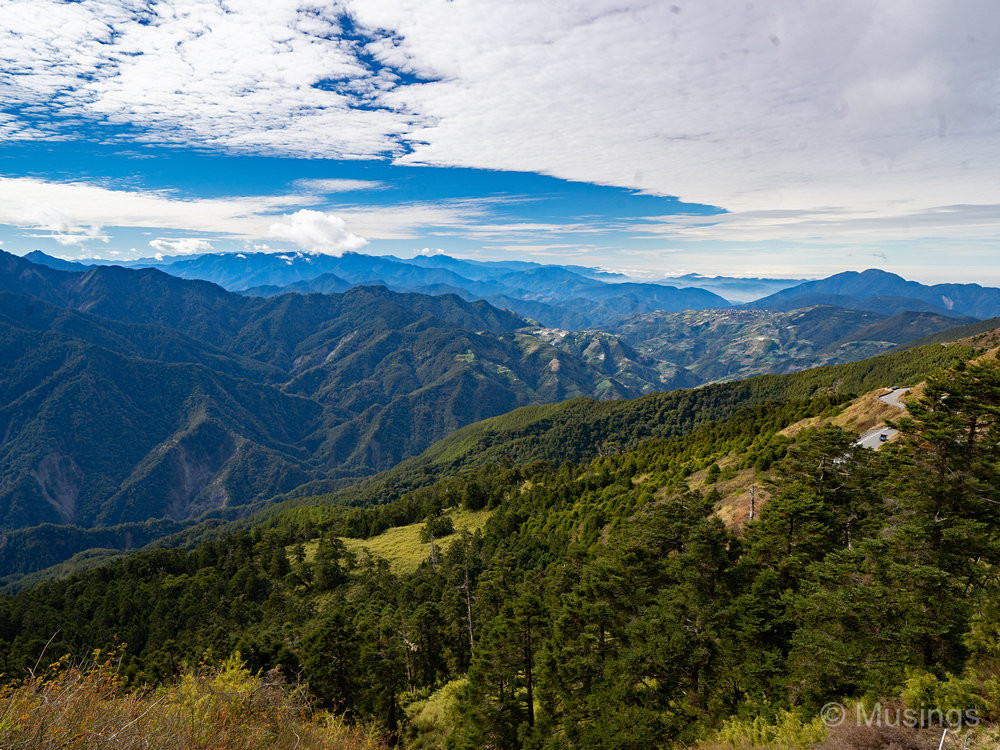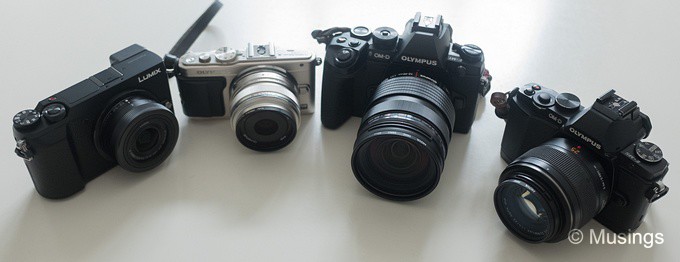In the last couple of years, I’ve done a post at each year end reflecting on how the current camera system I’ve been using that year has fared. I’ve done two annual reviews on the m4/3, my primary camera system from 2012, here for 2016, and here for 2017. 2018 was when I changed my camera system from m4/3 to Sony FE, so I should likewise do a similar inaugural reflection for this full-frame camera system for 2018.
It’s interesting to see how much the full-frame mirrorless ILC scene has changed since the Sony A73. Oh, CaNikon have had their full-frame digital systems for years now, but it was Sony that jumped into FF mirrorless space first. The Sony A73 wasn’t just a fantastic camera for its price-point, even if it brought to affordability a huge range of features that had up till that point been reserved for expensive ILCs. It seemed to significantly also accelerate the public plans of CaNikon to announce their ‘me too!’s. Before that, CaNikon had been pretty coy about their intentions. Everyone knew it was just a matter of ‘when’, not ‘if’ – but there was a general feeling that they were taking their own sweet time. But when the A73’s runaway success was apparent, all of a sudden, both Canon and Nikon jumped in with big announcements of their own full-frame mirrorless systems. Oh, I’m sure their systems have indeed long been in development for years now, but both of these long-time imaging giants practically lost all desire to keep their intentions under wraps and pushed their huge public announcements just a few months after the A73 was released. I guess both manufacturers needed to stem the outflow of their users to the Sony FE system.
So, now that the first iterations of Canon and Nikon mirrorless full-frame ILCs are out on sale, the full-frame space has suddenly become pretty crowded, with even Panasonic also announcing their own full-frame system too – sending shivers to the m4/3 users, who probably wondered whether the m4/3 consortium that’s been led all these years by the Olympus-Panasonic duo is now going to be down to one. To be fair, Olympus shows no sign of letting up, with their recent announcement of the next E-M1 body. You have to hand it to Olympus: they are really playing up to their technological strengths, with this upcoming E-M1X offering out of the world stabilisation of 7.5EV. That’s crazy good, and means a few seconds long handheld shot are now doable.
Despite the now intense competition in FF mirrorless space, the Sony FE system has had a good number of lead years ahead already, and they’ve been innovating. The first cameras in the A7 line were loud, had flaky focusing, so-so noise control, and poor battery-life. It’s taken so many models from then till now for Sony to finally put up something that’s this affordable, relatively, and offering a feature set and performance level close to the best traditional FF DSLRs. And the Sony FE lens line-up is now exhausting with (albeit some very pricey) first party lenses, several native lenses designed by third party manufacturers Tamron and Sigma, and a massive catalog of other system lenses that you also use with the right adapters. CaNikon is basically playing catch-up now, and in the years they’ll take to refine their line of mirrorless FF cameras and grow their lens families, Sony is going to continue to innovate. In short, even with the massive user base that Canon enjoys, I’m not tempted by the CaNikon full-frame mirrorless systems at this point and reckon I’ll be staying put with the Sony system for a while at least.

And after 8 months with Sony FE in 2018, my main takeaways of this system:
The increased dynamic range Is by far for me the most significant advantage the Sony FE has over the m4/3. I seriously doubt if I could have created in post-processing those images from the Mt. Agung sunrise shoot on the E-M1, good as it is. The shadow recovery from the A73’s RAW files is just incredible. To a lesser degree too, I’m also enjoying the much better noise control that’s coming out of the larger sensor on these full-frame systems. I used to shoot primarily at ISO1,600 on the m4/3 cameras, and only daring to.go up to ISO3,200 if I absolutely had to. But on the Sony A73, I can easily dial up ISO in excess of 6,400 and still be confident that I’d get a good RAW image to work with in post-processing later.
The battery life on the A73 is likewise super liberating, alongside also its support for USB in-camera charging. The package as bought in April came with a second battery, but I’ve hardly had to touch it despite being on day-long trips out during the two vacations we had in June and December this year, and shooting between 800 to 900 shots on several days.
The Eye-AF is also fantastic, though only when it works i.e. on supported lenses! There are a couple of shots I recently took using my relatively venerable Olympus E-PL6 and the Olympus 17mm f1.8 which also produced tack-sharp images of Hannah’s eyes, but the occurrence of that precision seems to be a hit and miss thing for me on the m4/3 bodies. Whereas on the Sony A73, if I’m on Eye-AF and I don’t nail it, I know it’s exactly because my technique sucked haha.
Lenses wise, the Sony FE 24-105mm f4.0 is a godsend. The longer focal length of 105mm compared to the Olympus 80mm equivalent on its Olympus Pro 12-40mm f2.8 is not trivial, and has allowed me to create some really nice portrait shots from semi-standoff distance this year, e.g. the ones with Taksu Photography at the Balinese local market in June this year. Funnily, the 24-105mm f4.0 is so good that I’ve ended up neglecting my primes even for home use: the Samyang 35mm f2.8, and Sony FEs 50mm and 85mm f1.8s. Quite the irony as the vast majority of the m4/3 pictures I’ve taken of my kids have been using primes, and specifically that holy trinity: Olympus 17mm and 45mm f1.8s, and Panasonic 25mm f1.4.

The two largest disadvantages of the Sony FE system though still remain its fairly high asking prices for native system lenses, and also the very shallow depth of field I have to work with. The former has meant that for the zoom lenses, I’ve had to settle for the slower and less expensive f4.0 lenses instead of the very expensive f2.8 equivalents. For example, the Sony FE 16-35mm f4.0 costs USD1,248 against the USD2,198 the f2.8 version costs.
But as the saying goes; money can be earned and used to buy lenses. OK, but there’s no such saying haha. But the very little tolerance for error in judging depth of field is a really serious matter. I had a good number of keepers for casual group shots using the E-M5 and E-M1 even when I was shooting carelessly. With the A73 however, I absolutely have to nail my focus point against the aperture I’ve set, as there is no room for error. Getting everyone is focus is still fairly easy if every person in the group is at the same focusing distance, but when they’re not, the full-frame camera systems are basically unforgiving. If there’s one advantage of smaller sensors in cameras, it’s this.
And lastly, one huge advantage I enjoyed with the m4/3 was the number of camera bodies I owned on the system: I had five for the last several years: the E-M1, GX85, and E-PLs 6 and 2. Of these, the first two were the ones I took on vacations, and I had my two Olympus Pros mounted on either one. This recent Taiwan trip saw me changing lenses on the A73 up the wazook, and part of me was constantly afraid that I’d drop one of the three lenses I brought along for the trip! If Sony could come up with a budget FE body! Or maybe alternatively, I could look into getting a Sony Alpha A6500. Sure, it’s an APS-C, but it’s a very good APS-C camera that can use the the FE lenses!

So what do I have to look ahead for this coming year for the Sony FE? Lens-wise, I reckon I’ve got a good enough set that covers all the important focal lengths at this point. True, two of my key first party lenses are at f4.0s. As far as the 16-35mm focal length is concerned, putting aside the physical size difference between the f2.8 and f4.0 versions, I simply don’t use the lens often enough for me to justify an upgrade for it, so I’m sticking with my f4.0 version. I use the standard zoom range of 24-70mm a lot more, comparatively. There are of course f2.8 versions for this general purpose zoom range, including a reasonably affordable one too in the form of Tamron’s 28-75mm f2.8. But I’ll be losing both the wide and longer focal lengths if I go with that. So, until Sigma or Sony comes up with a 24-105mm that’s f2.8, no I don’t see myself giving up the current 24-105mm f4.0 either. It would be great too if someone comes up with a 24-120mm f4.0, like what Nikon has for its full-frame DSLRs – I’d happily trade the 24-105mm f4.0 in the blink of an eye for that!
The other lens that I would consider a switch would be in the 70-200mm f2.8 range. I got my current Tamron 70-200mm f2.8 for dirt cheap, but the performance of this Canon lens with the Sigma MC-11 adapter is just a little consistent. Sony’s FE 70-20mm f2.8 very commanding SGD3,899 on retail price tag puts it well out of reach – compared to the about SGD1.7K I paid for the Olympus Pro 40-150mm f2.8 – so I can only hope that Tamron or Sigma comes up with a version of this very useful zoom lens for the Sony FE mount at some point.
So, all in, the Sony FE system and my A73 has really served me well this 2018 year. I don’t think I’ll still be giving up my beloved E-M1 and E-PL6 yet – and I especially have a soft spot for the latter, and might do a post soon on some recent pictures I took using the Olympus 17mm f1.8 on it. I really don’t have any imminent major purchases for the system coming up, but I’ll be keeping an eye on the Sony Alpha A6000 series of bodies to see if any one of them gets a big price reduction for me to pick one up.
This is my last post for 2018, and also written entirely on the iPad Pro 11. I think I’ve found my blogging groove on this new tablet. Happy 2019!
Recent comments